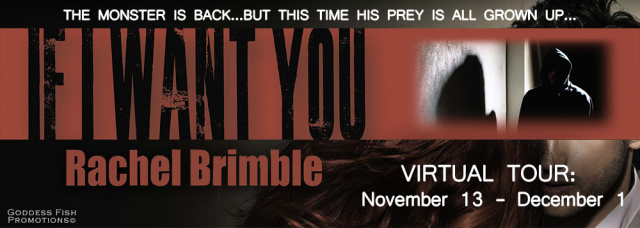Paratexts were first associated with books and those features initially existed to persuade someone to read them. This persuasive trend still applies to modern day creative mediums where paratext has taken on a broader definition.
Billboard posters and trailers for a new film act as persuasive paratexts like additional features of a book. Paratexts are also a source of inspiration for new material. Media has always inspired new media. Genette, in 1977 wrote, “a text without a paratext does not exist and never has existed” (1997, p.3). Shakespeare wrote historical plays based on political expediency and events of the time. The paratext in his day may even have been word of mouth or courtly gossip and probably inspired the medium of several of Shakespeare’s works.
Figure 9:
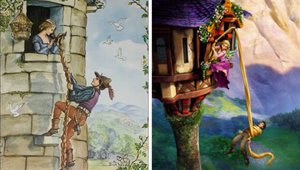
Figure 9 compares Grimm’s fairy tale version of Rapunzel and Disney’s “Tangled”. Many classic animated Disney films were inspired by the Grimm’s Fairy Tales where old stories become the paratext for the new. An idea is never thought to be totally original. Inspiration can come from anywhere and a paratext is often the starting point for material to be reworked across mediums, even if it is not immediately accepted by audiences. As Rose wrote, “every new medium that has been invented, from print to film to television, has increased the transporting power of narrative. And every new medium has aroused fear and hostility as a result” (2011, p.36).
Which leads me to the perhaps predictable early criticism of “Loving Vincent”, a feature film, being created through painting and subsequently animating Van Gough’s original masterpieces. How can a project, based on the static nature of Van Gogh’s oils and paint come alive in the world of film, especially if we consider, for a minute, the breath-taking scale of commissioning artists to recreate Van Gogh’s work with a view to having it animated?
Figure 10:
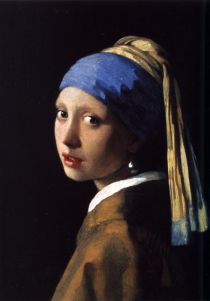
Figure 11:
Perhaps the concept isn’t so unique, however. Art has inspired film before. ‘Girl with a Pearl Earring’ seen in figure 10, is an oil painting from the 17th Century by Johannes Vermeer and was adapted into a drama film in 2003. Figure 11 shows the trailer for the film. The fictional film places the girl in the portrait as the main character in the film and builds a storyline around her. This example highlights how a painting, despite being the original text, became a paratext itself, albeit for another medium. Since both the painting and the film of “Girl with a Pearl Earring” now exist there is no control over which text people are exposed to first and therefore how each one is read. Gray stated that “our reading of any text is illuminated by potentially thousands of texts that have already been” (2010, p.32). New information in one text now feeds information into the other text showing that they are both paratexts for each other. They have become interdependent. Not only can this affect someone’s reading of a text, it can also dictate their entry point into the ‘world’.
An original text, for example, the Harry Potter novels, existed first, but may not now necessarily be someone’s first entry point into that ‘magical world’. Their own ‘main text’ might be one of the other surrounding materials that exist, such as one of the Harry Potter films, a Nintendo DS Harry Potter game or even Harry Potter themed stationery. As Gray writes, “many paratexts are encountered after ‘entering’ the text” (2010, p.40).
And so, it may be for the makers of “Loving Vincent”. If successful, these devotees of Van Gogh, in adopting and transferring his source material to a different medium may be providing future fans a new way into the original masterpieces.
Paratexts provide audiences with different entry points to a text or other original material. They exist to expand the influence of a creative work. Today, the motivation behind this expansion is to grow a readership, viewership, increasing its sphere of influence. Gray describes Paratextuality as “a vital part of the media business, precisely because paratexts play a key role in determining if a text will sink or swim” (2010, p.39). If a film has not done well at the box office on an opening weekend it can even be the paratexts, such as the trailers and billboard posters, which are blamed for failing to persuade an audience of a film’s potential. Merchandise, too, is created to promote a piece of work which, as a consequence, can make more money for a creative work.
Genette (1997, p.3) wrote, “the ways and means of the paratext change continually, depending on period, culture, genre, author, work and edition, with varying degrees of pressure”. One of the most interesting aspects of “Loving Vincent” is the role paratexts play not just in promoting the final product (a trailer for the film already exists), but the role they inevitably play in the creation of the work itself. The main protagonist of the film, anyone who knew him and all those who sat for him are obviously dead and his paintings by themselves do not tell an entire story. So the filmmakers are having to use paratexts in order to discover the stories behind Van Gogh and some of the subjects of Van Gogh’s work. Paratexts of the film, not just his artwork, but written biographies and documentaries too, are inherent in the creation of the actual film.
Figure 12:
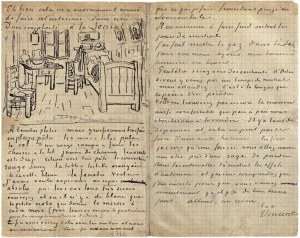
Figure 13:
Figure 14:
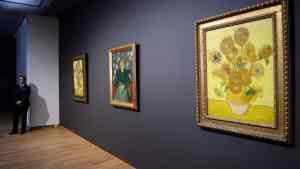
Figure 12 shows one of Van Gogh’s letters, written to his brother, a paratext allowing the filmmakers to further understand the man on a personal level. Because in these letters he opens up emotionally, they are being used to aid the storytellers in the construction of a more accurate character. Figure 13 is a clip from one of the many documentaries that exist about Van Gogh. This particular film highlights the different stages of his life, which country he was living in, at what age and why he was there – all crucial information. Finally, figure 14 is a photo of the Van Gogh Museum. The museum showcases the entire history of Van Gogh’s art including the unsold paintings. “Loving Vincent” is being promoted as the world’s first fully painted feature film. Access to the museum is key to helping the film-makers adhere, as accurately as possible, to Van Gogh’s artistic style at different stages in his life.
Without paratexts, there would be no film. A paratext informs, persuades, inspires, and is interdependent with other paratexts. And they often dictate an audience’s entry point into a subject.


Advertisements



